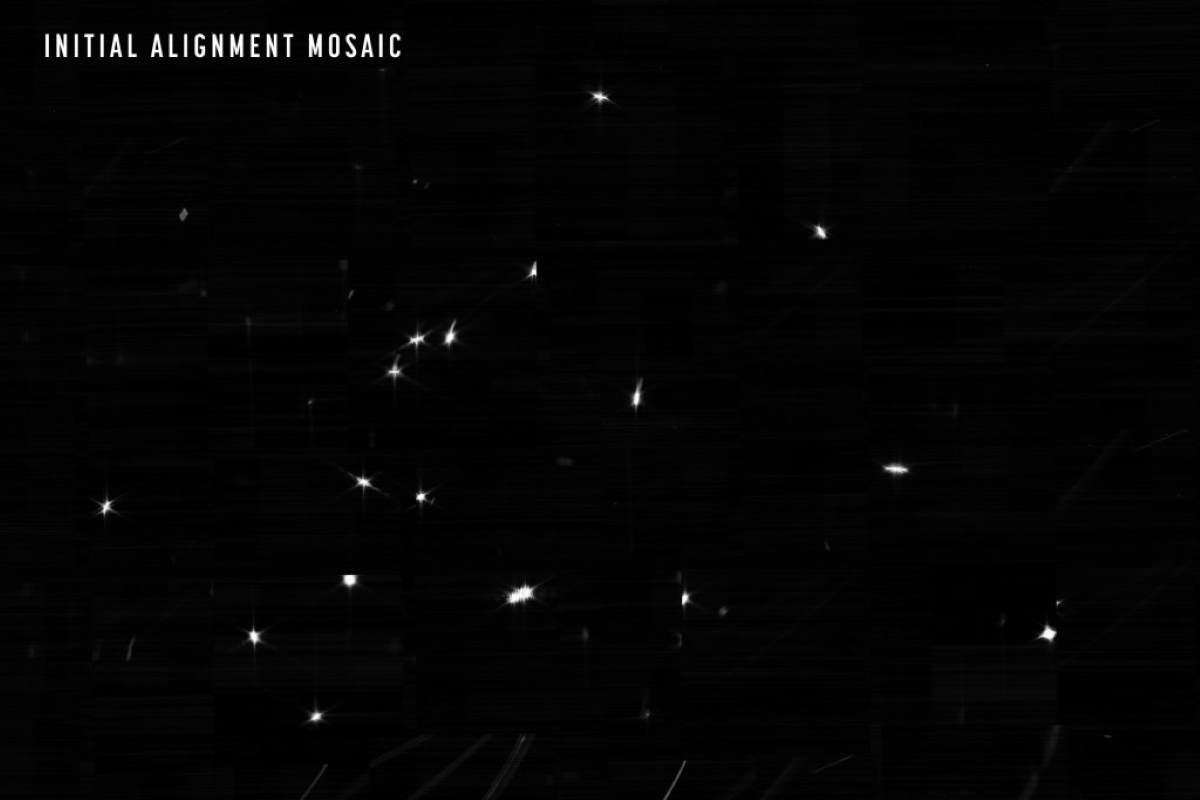NASA’s James Webb Space Telescope (JWST) took its first photo today (February 11, 2022). Despite we see multiple stars on the photo, the image is actually a mosaic of 18 images of the same star, HD 84406, which will now be used to align the 18 segments of the primary mirror to ultimately produce a single image of that star. The new space telescope also took its own selfie!


Video: JWST takes its first photo
James Webb Space Telescope sees its first star – 18 times!
The James Webb Space Telescope is nearing completion of the first phase of the months-long process of aligning the observatory’s primary mirror using the Near Infrared Camera (NIRCam) instrument.
The team’s challenge was twofold: confirm that NIRCam was ready to collect light from celestial objects, and then identify starlight from the same star in each of the 18 primary mirror segments. The result is an image mosaic of 18 randomly organized dots of starlight, the product of Webb’s unaligned mirror segments all reflecting light from the same star back at Webb’s secondary mirror and into NIRCam’s detectors.
What looks like a simple image of blurry starlight now becomes the foundation to align and focus the telescope in order for Webb to deliver unprecedented views of the universe this summer. Over the next month or so, the team will gradually adjust the mirror segments until the 18 images become a single star. (Text: NASA)
Sources
- James Webb Space Telescope (JWST) official website
- “Photons Received: Webb Sees Its First Star – 18 Times” on the NASA blogs website
- Space Shuttle Endeavour’s Touchdown Meets Columbia’s Salute [An amazing photo from the past] - February 29, 2024
- Moon Landings: All-Time List [1966-2024] - February 23, 2024
- From Orbit to Ordinary: 10 Earthly Applications of Space Technology - January 23, 2024


